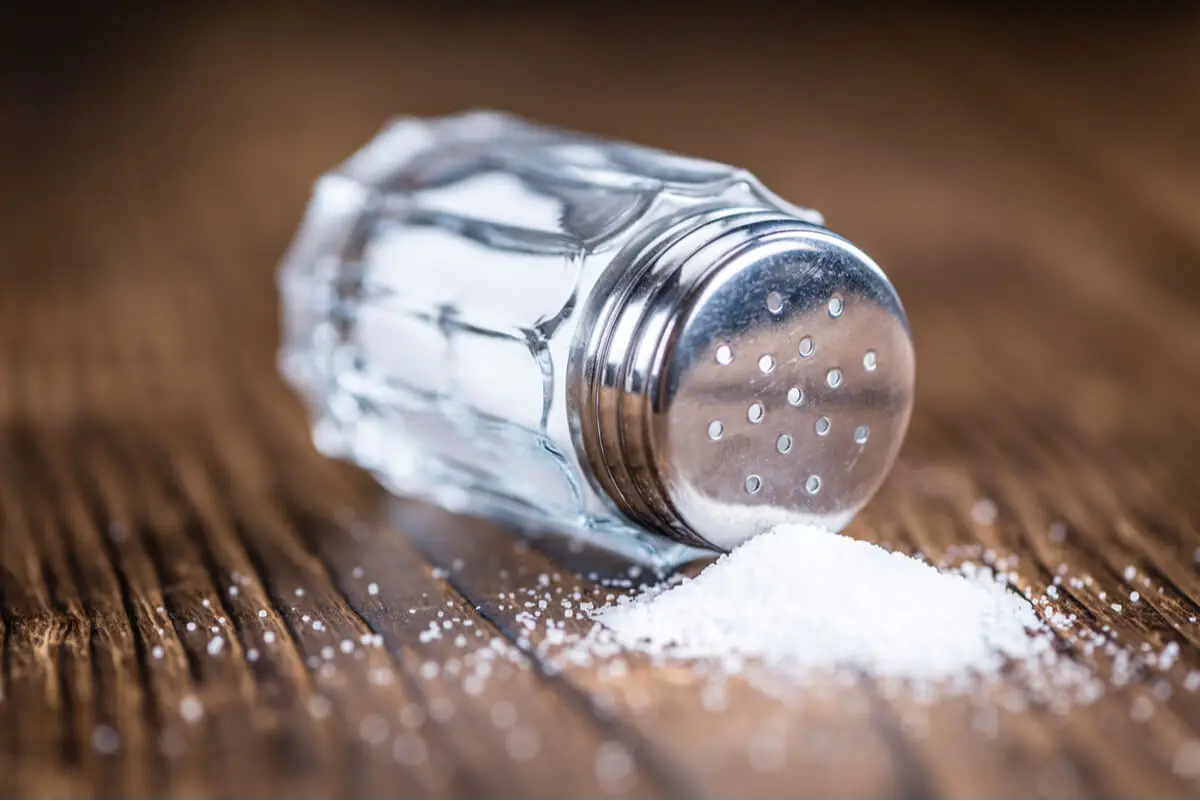Arrhythmia and Salt Intake: How Are They Related?


Written and verified by the nutritionist Saúl Sánchez Arias
Excessive salt consumption is considered harmful because it increases the risk of arrhythmia and other blood pressure-related problems. However, this is aggravated by the intake of poor quality, highly processed salt and in people who are genetically predisposed to these disorders. We’ll take a look at the link between arrhythmia and salt intake in today’s article.
Despite the dangers of excessive salt, sodium is an essential mineral to control of several physiological processes. It isn’t only vital for the proper transmission of nerve impulses, but also for the prevention of type 2 diabetes. Because of this, the idea is not to eliminate it completely from the diet, but simply to moderate its intake. Let’s have a closer look at the topic.
Which foods are high in salt?
In general, the foods with the highest salt content are industrial ultra-processed foods. These products are manufactured to be hyperpalatable, which leads to the desire to overeat them. This is likely to cause us to experience many different health problems, especially inflammatory ones.
The fact is that they don’t only concentrate sodium inside, but also simple sugars and trans fats in large quantities. However, it should be borne in mind that salt is present in almost all products consumed on a regular basis.
However, this doesn’t mean that salt is harmful to health. On the contrary, it’s necessary. However, we must ensure that it’s ingested in adequate quantities. The salt found in fresh food doesn’t usually pose a problem in the medium term. In addition, it isn’t refined, so we would speak in this case of high-quality salt.
We can even highlight that some recent studies advise a total sodium intake of about 5 grams per day, well above the current recommendations of the main international organizations.
It has been shown that this dose is effective in reducing mortality from any cause and to improve the functioning of the physiology of the organism. Even so, it’s also key to increase our potassium intake.

You may be interested in this article: Excessive Salt or Sugar Intake: Which Is Worse for Your Health?
The relationship between salt and arrhythmia
Although salt is an indispensable element for life, its consumption in excessive quantities tends to lead to inefficiencies internally. In particular, alteration of the physiology of sodium channels can lead to arrhythmia, as evidenced by research published in the journal Advances and Pharmacology.
However, this doesn’t necessarily mean that inadequate salt or sodium intake will lead to this problem. There’s a great deal of speculation about this.
What many authors maintain is that ingesting high amounts of salt – in a context of poor lifestyle habits – can indeed have a negative effect on the functioning of the cardiovascular system.
If potassium intake isn’t sufficient, or if we’re talking about situations of sedentary lifestyles, then negative health consequences may be experienced. However, there are also times when salt and sodium intake must be increased.
An example is the case of athletes who are active in hot and humid conditions. Here it’s necessary to compensate for the sodium lost through sweating, so it’s advisable to ensure a significant intake at mealtimes. Otherwise, the risk of hyponatremia and health problems is increased.
Dietary strategies to prevent cardiovascular disease
Apart from optimizing salt intake, there are other strategies that can be effective in improving the functioning of the cardiovascular system. For example, it’s important to avoid high-calorie diets in the context of a sedentary lifestyle. Being overweight considerably increases the risk of cardiac disorders.
In addition, toxic habits such as alcohol consumption and smoking should be avoided. These elements can cause arterial stiffness in the medium term, which increases the risk of hypertension.
The consumption of antioxidants is also beneficial, as it helps to neutralize the formation of free radicals and their subsequent accumulation in the tissues. Ultimately, the practice of physical activity shouldn’t be neglected.
This habit increases cardiac efficiency and raises its capacity to pump blood. It also decreases inflammation levels and prevents alterations such as platelet aggregation.
Another great article we’re sure you’ll enjoy: What You Didn’t Know about Cardiac Arrhythmias
What is the right amount of salt to consume?
As regards maximum salt consumption, there’s quite a lot of disagreement at present. The most classic authors consider that it would be optimal to keep the daily sodium intake below 2 grams, whereas recent evidence maintains that up to 5 grams per day is safe.
In any case, what the experts agree on is the need to maintain a balance between sodium and potassium intake, since they have opposite effects on blood pressure control.
Similarly, these recommendations may be altered in athletes or in the case of people who live in places where temperatures are very high. In these contexts, it’s advisable to adapt the diet individually to avoid problems with the electrolyte balance.

Salt intake may be related to the development of arrhythmia
Although there’s a lack of evidence, some researchers believe that high salt intake may increase the risk of arrhythmia, especially in predisposed individuals. There’s also reason to associate it with the development of various cardiovascular disorders.
However, sodium is an important element for the body. It must therefore be included in the daily diet in sufficient quantities. Ideally, foods such as ultra-processed industrial foods should be avoided, as their amounts of salt and other additives are quite high.
All cited sources were thoroughly reviewed by our team to ensure their quality, reliability, currency, and validity. The bibliography of this article was considered reliable and of academic or scientific accuracy.
- Mente, A., O’Donnell, M., Rangarajan, S., McQueen, M., Dagenais, G., Wielgosz, A., Lear, S., Ah, S., Wei, L., Diaz, R., Avezum, A., Lopez-Jaramillo, P., Lanas, F., Mony, P., Szuba, A., Iqbal, R., Yusuf, R., Mohammadifard, N., Khatib, R., Yusoff, K., … Yusuf, S. (2018). Urinary sodium excretion, blood pressure, cardiovascular disease, and mortality: a community-level prospective epidemiological cohort study. Lancet (London, England), 392(10146), 496–506. https://doi.org/10.1016/S0140-6736(18)31376-X
- Miller, D., Wang, L., & Zhong, J. (2014). Sodium channels, cardiac arrhythmia, and therapeutic strategy. Advances in pharmacology (San Diego, Calif.), 70, 367–392. https://doi.org/10.1016/B978-0-12-417197-8.00012-2
- Alpert, M. A., Omran, J., & Bostick, B. P. (2016). Effects of Obesity on Cardiovascular Hemodynamics, Cardiac Morphology, and Ventricular Function. Current obesity reports, 5(4), 424–434. https://doi.org/10.1007/s13679-016-0235-6
This text is provided for informational purposes only and does not replace consultation with a professional. If in doubt, consult your specialist.








